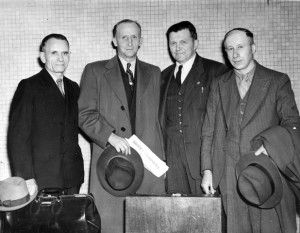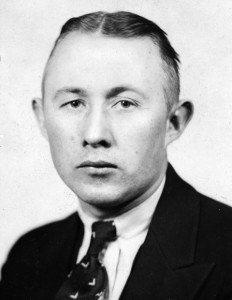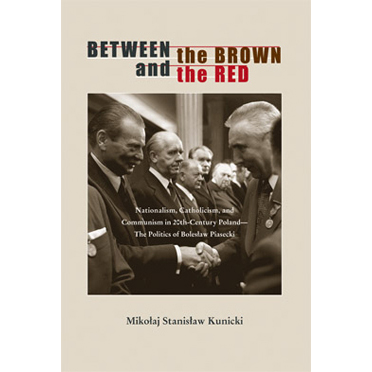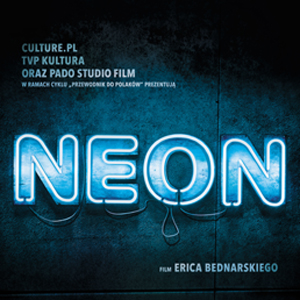 Hurrah Revolutionaries: The Polish Canadian Communist Movement, 1918-48
Hurrah Revolutionaries: The Polish Canadian Communist Movement, 1918-48
By Patryk Polec
McGill-Queen’s University Press 2014
About twelve years ago, my husband and I were in Warsaw, Poland, for a number of months enjoying the city, and of course, getting some research done. He was in the process of scouring the Archiwum Akt Nowych (New Act Archives) for the big and small historical treasures that would form the basis of his doctoral dissertation. The purpose of his existence at that time was to seek out information on interwar communists in Poland, how these communists saw themselves, their goals for Poland, and really to determine how “genuine” their “communism” was. As is the giddy joy found in all doctoral candidates who are in the process of researching their subject matter, the Archives did not quell this budding historian’s desire to uncover the secrets locked by history. So we began to forage through the city for antique bookstores in hopes that he could get his hands on materials produced by Polish communists of the 1920s and 1930s. We thought that surely, in such a city as Warsaw, which has lived through times of glory and times of tragedy, we would find what our hearts desired—a plethora of communist material that had been preserved by another lover of history. And let’s be honest, do there even exist any Poles who are also not amateur historians – who are not lovers of history?
We entered one such shop off Hoża Street and were whisked away into the past. The darkened shop with its sturdy bookcases lined with one book after another, their spines in perfect order ready to be picked up by eager hands and to reveal the knowledge held in their pages—like soldiers during a salute, standing proud, honourable, strong—exacting quiet respect from their captive audience. With diligence we began to touch history looking through the books. So many treasures, but not the ones we were looking for. At a certain point, my husband turned to the shopkeeper asking him, “Sir, would you happen to have communist materials from the interwar period?” The man took a good long look at my husband, his face mirroring a mixture of curiosity, surprise and bewilderment, and answered, “Communist materials? No one wants to read that. People have had enough of communism.” And with that came the realization that communism was perceived as one monolithic monster that needed to be purged from historical memory, and that everything communist was the same—Polish traitors to the Soviet Union. Being a “Pole” had become antithetical to being a “communist”. These two forms of self-identification could not co-exist. Moreover, communism could not be dynamic, nuanced or complex. Its interwar variety could not possibly have been different from its Cold War iteration.

Polish Brotherly Aid Society dinner, Coleman, Alberta, c. 1935. Photo: Gushul Studio, Blairmore, Alberta. (Glenbow Archives, Alberta, nc-54-1990)
And here is where Patryk Polec’s book, Hurrah Revolutionaries: The Polish Canadian Communist Movement 1918-1948, digresses from current popular thinking, coming face to face with the communist movement amongst Polish immigrants to Canada. Polec’s work, based on his doctoral dissertation, offers the reader a study into the rise and decline of the Polish communist movement in Canada from the 1920s to the 1950s. This work really underscores the idea that communism was like any other ideology or movement – a product of its time, only understood and experienced within a particular context. Polec depicts Communism as an ideology that was dynamic and fluid, adapting itself to the needs of its environment. And he is right. The idea of a Communist monolith needed to finally be put to rest.
The roots behind Polec’s project were simple: “It had never occurred to me, living in patriotic Roncy [Roncesvalles Street, Toronto, ON—Little Poland] that Polish radicals had once been active on this continent… Radicalism… was a European phenomenon, something from behind the Iron Curtain, that my parents had opposed.” Moreover, Polec notes that radicalism of the interwar period has this tendency of being associated with Stalinism. Through the lens of the interwar Poles in Canada, he saw it differently. In his work, the author demonstrates that radicalism really just denoted the labouring day-to-day average Joe who welcomed “radically progressive ideas” because they spoke to his working-class status, his worker identity. These ideas were geared towards him, neither condemning him, nor marginalizing him. Instead, radicalism, as Polec calls it, was a “worker-friendly ideology.”

The last of 100 Polish-born repatriates who left Canada for Communist Poland
Within the Polish community in Canada, this Leftist radicalism would become especially pronounced in the 1930s with the Great Depression. It was then, as Polec argues, that the Polish Canadian Communist movement (PCCM) was able to convince traditionally conservative and for the most part, Catholic Poles, to consider and adopt the Left as the best viable answer to their current socio-economic conditions. Furthermore, the PCCM offered these poor workers the reasons behind their suffering while also providing them with an array of solutions to their predicament. In essence, the rising popularity of the movement was a response to the misery, exploitation and racism Poles experienced within their new Canadian homeland.
Although the growing popularity of radicalism amongst the Poles in the 1930s makes perfect sense, Polec’s argument that the roots of leftist radicalism as something the Poles arrived with when they crossed the Atlantic is unconvincing. It is his assertion that radicalism was spread amongst peasants in nineteenth century Poland who then crossed the ocean carrying this political idea. Yet, he shows little to no evidence to support this claim. Moreover, his assertion would suggest that the majority of nineteenth century Polish peasants became cognizant of a working-class consciousness. It is more likely that they became radicalized after their arrival to Canada as a result of socio-economic conditions that they faced in these new circumstances. What Polec does do well, is link the PCCM to the broader Canadian Communist and labour movements.
In his approach to the subject matter, Polec takes care to examine the interaction between people, ideology and institutions. In part, this also entailed looking at the individual as being shaped by, and in shaping, his environment. The Leftist radicalism, according to Polec, would become most pronounced in the 1930s with the Great Depression. It was also then, that the PCCM was able to transform through the policy of the “popular front” to be more responsive to the needs of workers. The success of the communist movement, according to the author, was rooted in its ability to appropriate nationalist symbols and rhetoric as vehicles for promoting worker consciousness. Polec sees the radicals as constituting a formidable force in the Polish community with their own paper, large federation and an array of events. He also explores its evolution. Initially, radicalism was emphasized as a means by which the worker was able to overthrow the capitalist oppressor’s yoke, but by the later 1930s, revolutionism was minimized and greater emphasis was placed on educational-cultural activity and stronger leadership. These changes resulted in the rising popularity of the movement among the Poles in Canada (Polonia) until the post-war years, when the aggressive Soviet takeover produced new waves of anti-communist Poles who rejected everything Communist.

Spanish civil war volunteer Stefan Kozlowski, killed i Heusca in September 1937. MacKenzie-Papineau Battalion
Patryk Polec’s book will be of interest to scholars and non-scholars alike. It is the first book to deal with Polish Canadian communists, and he has paved the way for other scholars to continue in his footsteps. This work is much overdue, if you ask this author, pointing to a persistent desire within Polish immigrant historiography to ignore the historical figures and movements on the fringes of history. Despite its many accolades, the book has its shortcomings. First, Polec tends to make broad, sweeping statements without supporting evidence. I find this difficult to swallow, since all a historian has is his evidence. Moreover, he tends to rely heavily on a number of secondary sources which contain inaccurate and outdated data. He should have challenged the scholarship that is more than thirty and forty years old. Lastly, his post-war analysis is the weakest aspect of the study. Perhaps it would have been better had he stopped with the Second World War, given that the onset of the Cold War opened up a new Pandora’s box which he was unable to adequately address. Nevertheless, this book is an important contribution to Canadian and Polish history alike. It challenges the notion that communism was a static ideology, and it shows the complexity of the Polish community in the interwar years. And finally, it provides a harvest of rich information about the culture of the PCCM by examining its “Red Culture”—the daily lives of its members.
CR
Photos by permission of McGill-Queens University Press



